PCB Via Covering
Posted:06:07 PM December 17, 2019
writer: NextPCB
The solder paste may enter through holes and cause inadequate or non-existent solder joints if vias are not covered. The situation of vias is exposed shown in the following picture.
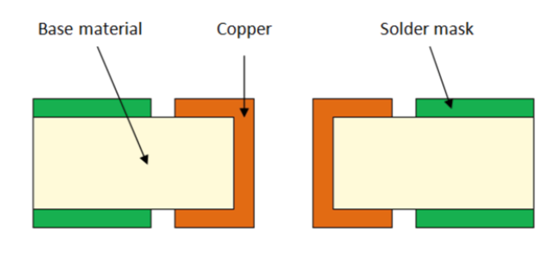
Via covering means that the via will be covered by solder mask or other chemical material. Covering the annular and vias can reduce accidental short circuits. There are three types of via covering in the PCB manufacturing process.
Via tenting
Via tenting is the simplest covering type, which means that the via-holes are covered by solder mask ink without other additional process steps. Via tenting has two ways to close the via-holes.
1. Vias closed on one side and open on the other side of the PCB.
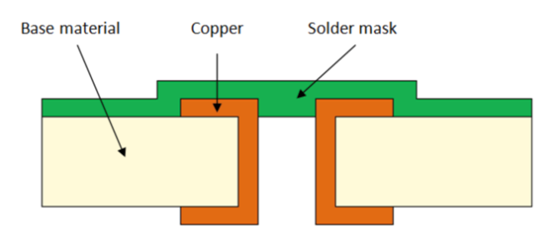
2. Vias covered on both sides of the PCB.
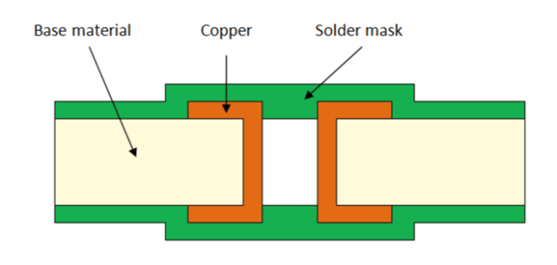
Via plugging
Via plugging means that the via is partially filled with non-conductive media such as epoxy/resin, solder mask ink, etc. There are two ways of plugging.
1. The via is partially filled with non-conductive media and then overprinted with conventional solder resist from one side, and the vias on the other side of the PCB is open.
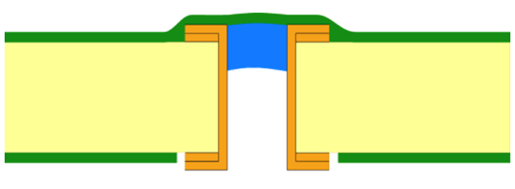
2. Filling the via with non-conductive media and overprinting it with normal solder paste on both sides of the PCB.
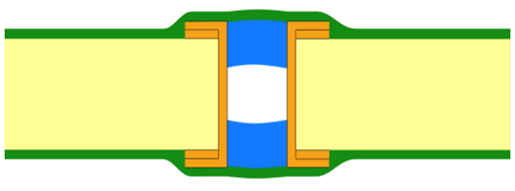
NOTES: The diameter of the plugged vias should be smaller than 0.5mm. And the multi-PCB recommends one-sided plugging because the encapsulated gas will crack when welding the double-sided plugged vias. Besides, no overprinted with solder paste in this type of coverage is also available.
Via filling
This type of via covering is that the via is filled with non-conductive media. The conductive vias in the BGA need filled vias. Since the solder pates may be sucked from the intended pad and flow down into the via-holes, which will form a poor or non-existent solder joint during the PCB assembly process.
There are two ways of filling.
1. The via is filled with non-conductive paste completely and overprinted with normal solder paste. And no overprinted with solder paste in this type of coverage is also available.
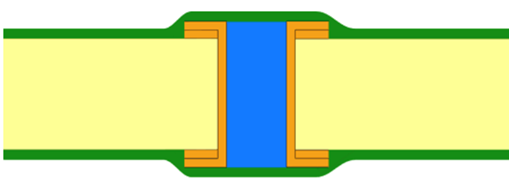
2. Via filling & capping
First, plating and cleaning the via, then pressing in a non-conductive paste and hardening the paste. Then the ends are planarized, metalized, and plated, which make it planar and solderable.
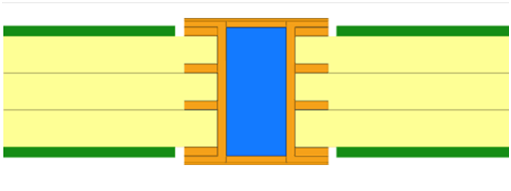
This technology is mainly used in "Pay-in-pad" solutions and is also applicable to stacked non-interlaced (micro) vias. Via filling helps to facilitate additional routing traces among BGA vias. What' s more, the filled and capped vias are also possible for blind vias.
The easiest production method is to have all vias open from both sides, and then the vias will be clean without any contamination and solder mask. But this method has the risk of short circuits. The practical fabrication way is covering the vias with solder mask on both sides, which may exist a chance that the via-hole is not completely closed and remaining a small opening in the middle. And it may cause possible failures in the usage of the PCB if the chemicals get stuck in these small opening in subsequent processes.
The most reliable method is filling the vias, but it is complicated and expensive. Each via covering type has its advantages and disadvantages. Customers can prepare their layouts according to the actually required standard of PCB assembly prototype or PCB mass production.
 PCB Assembly
PCB Assembly
 Layer Buildup
Layer Buildup
 Online Tools
Online Tools
 PCB Design-Aid & Layout
PCB Design-Aid & Layout
 Mechanics
Mechanics
 SMD-Stencils
SMD-Stencils
 Quality
Quality
 Drills & Throughplating
Drills & Throughplating
 Factory & Certificate
Factory & Certificate
 PCB Assembly Factory Show
Certificate
PCB Assembly Factory Show
Certificate









